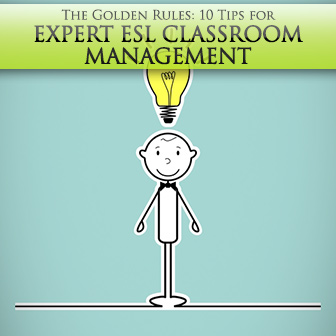Making the Shift: Moving from a Teacher Centered Classroom to a Student Centered Classroom


Apply these 10 tips for expert ESL classroom management and you will be golden.

“Student-centered” sure is a buzz word these days, but what does it really mean for the teacher? Well, in a nutshell creating a student-centered environment means putting the students' needs ahead of your own goals, and in practicing language, the students are the focus, not the teacher. The learners should be doing most of the talking and engaging, and the teacher should be a secondary figure who facilitates the way students are communicating. The teacher also guides students to correct language usage, and employs strategies for students to practice in a safe environment. Activities should incorporate student interests, and should cater to getting students actively involved.
In most classes, especially those focusing on language acquisition, practical application is vital for successful classroom dynamics. Practicing language points should provide learners with opportunities to employ everyday usage, and participate in memorable activities. It's also a good idea to practice multiple uses of points separately when applicable. For example, present simple tense can be used to talk about professions (I am a doctor), family (My sister is 14), and likes and dislikes (He likes pizza). Each of these practical applications will require own amount of practice.
Building upon what students already know and reviewing those topics frequently will lead to increased language retention and confidence. Focus on what they know whenever possible and review grammar, vocabulary, and syntax often and with variety. Repetition doesn't have to be boring or rote. Find new and interesting ways to practice old topics, introduce stories with a range of grammar points, and play games that allow students to review many topics at once.
English language learners are notoriously book smart when it comes to grammar. Sometimes though their application of that knowledge can be a bit more challenging. Encourage students to ask questions, and engage in regular dialogue about the nuances of grammar. If students want to learn about the hows and whys of grammar, you can take their learning to a whole new level by indulging them.
Find out what motivates your students, what interests them, and what will get them talking. Do activities where students define their preferences, and listen carefully to student conversations. Learn about their goals and hopes. You can tailor exercises and games to the group when you have a gage of what will move them to participate.
Teaching English can also be an opportunity to discuss meaningful topics, and influence students to make good choices. Realize that you can empower students to be better citizens in their classroom and local neighborhoods. Provide lessons that approach acts of kindness, giving advice, or solving difficult problems. Students can learn new ways of helping one another as well as assisting others in their community.
Exploring other cultures fits wonderfully into the framework of the ESL classroom. This especially holds true in multi-cultural classes where students can share their own cultural perspectives while learning about classmates. Take opportunities to examine global cultures including topics like food, clothing, manners, and similarities as well as differences.
ESL students of every age and every level have past experiences that you can utilize to make learning more meaningful for them. Allow your students to share their previous knowledge so they can grow into better speakers and gain confidence. It is always a good idea to showcase each student's strengths, and focus on what your students can contribute by allowing them to express opinions, talk about topics that are relevant to them, and share their experiences with language learning, or English specifically.
Students work hard in your classes, so be sure to take the opportunity to display their work prominently. When students create poster boards, presentations, stories or anything else that shows their progress as English speakers, showcase their work in your classroom. It will mean a lot to students and they will also continue to learn from each other as well as celebrate each other's successes.
Non-verbal signals can be very useful to manage the volume of your class, classroom etiquette or warnings that discipline is about to ensue. These signals can be tailored to your individual classes, and you can have students come up with their own ideas of how to institute non-verbal signs. A popular example used in a lot of classrooms today is when the teacher raises one hand, it means he or she is asking for the class to quiet down. As each student sees that that the teacher's hand is up, they too raise a hand and close their mouth so that other students notice it is time to be quiet. Pretty soon, the whole class will have raised hands and are silent. This can be used to stop an activity, to make an announcement, or simply to calm them down at the beginning of the lesson. Another popular one to use is the American Sign Language equivalent of applause. Students shake their hands in the air instead of clapping hands together. It is silent and can be used for various scenarios. One last one that you could employ during discussion is some type of sign (like the forefinger and pinky raised) to show agreement. This way the student who is speaking is getting affirmations without necessarily being interrupted by other students. Come up with your own set of non-verbal signals to manage all sorts of elements in your classrooms.
Take these 10 golden tips and make them your own for awesome student responses!